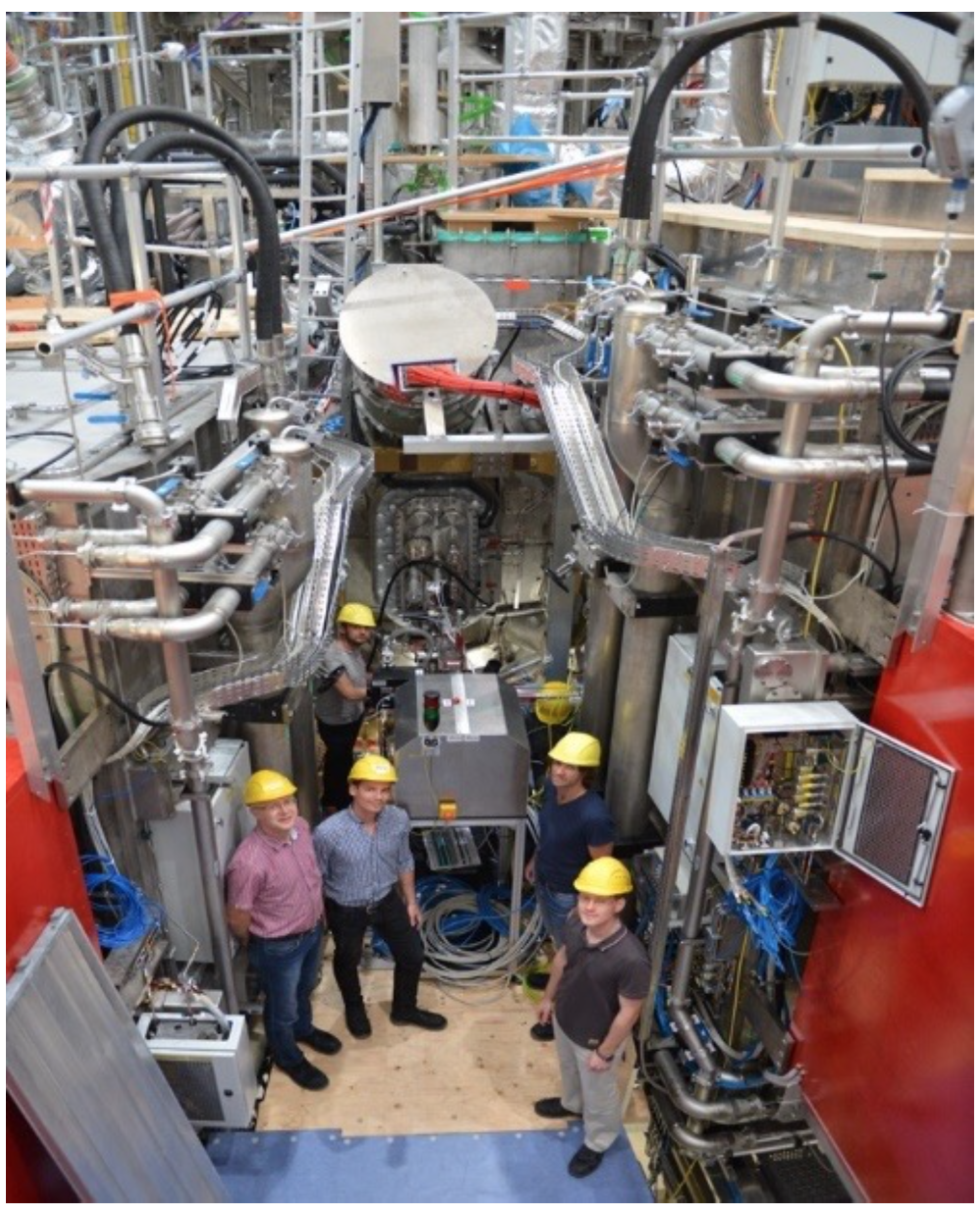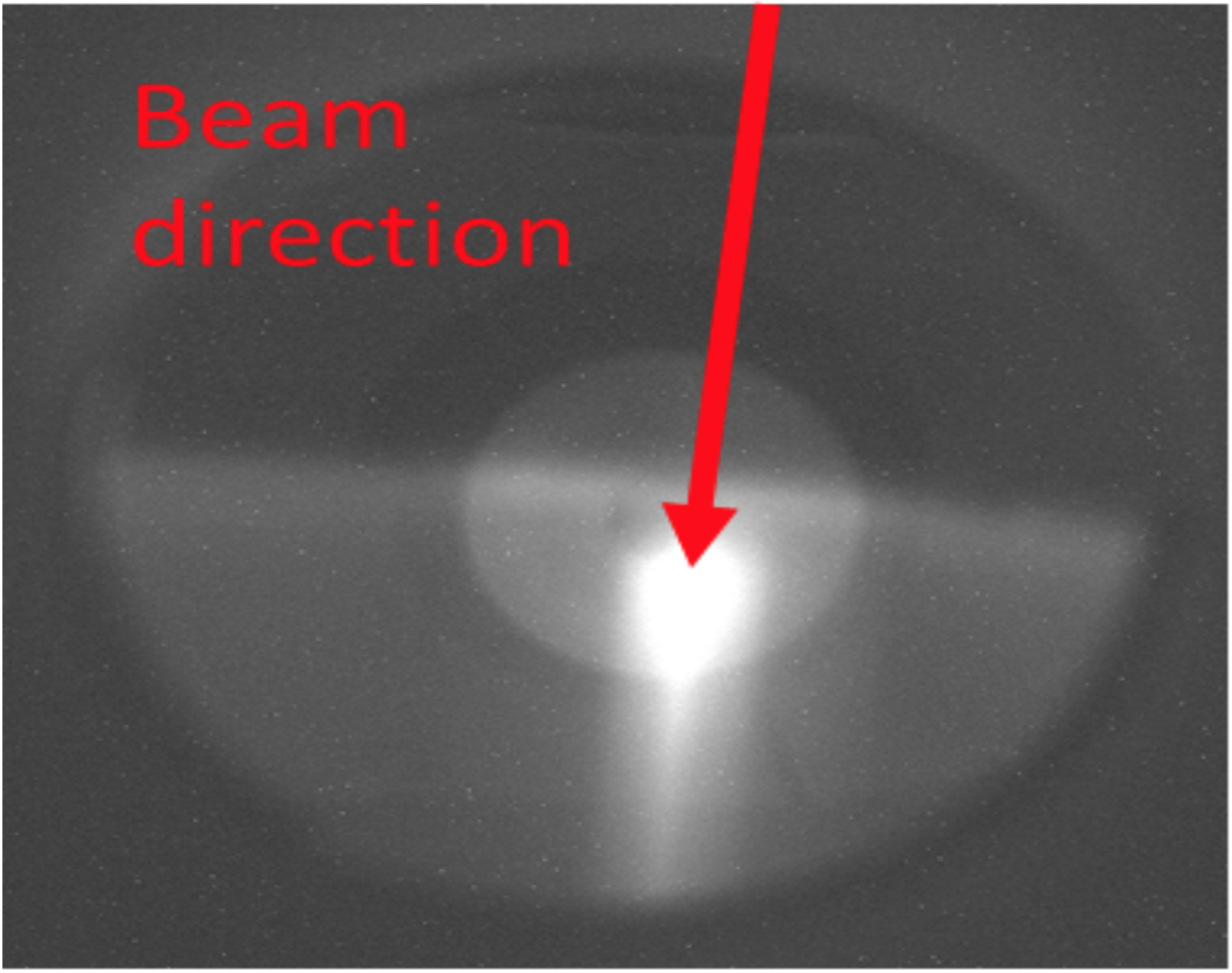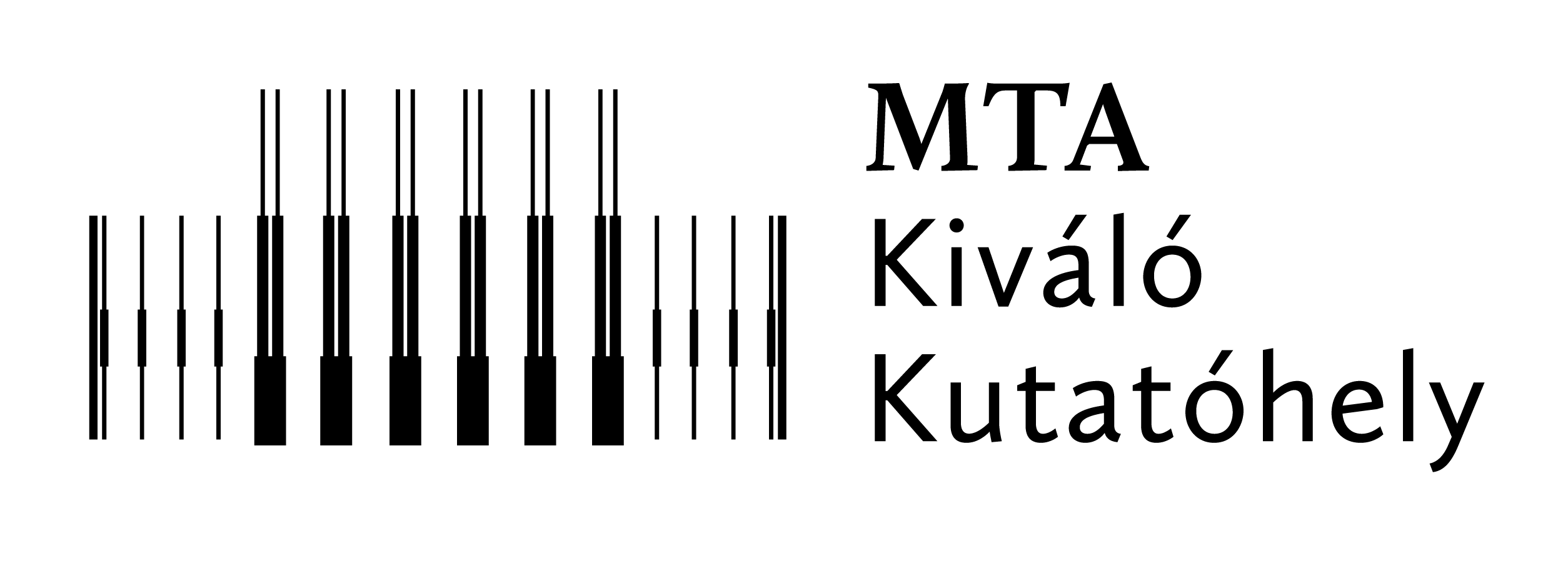2018
Alkali beam diagnostics measurements on the Wendelstein 7-X stellarator in Germany.
Working in the fusion plasma physics field the Beam Emission Spectroscopy (BES) research group designs, manufactures, installs and operates BES diagnostics in several major fusion devices worldwide. A new alkali beam diagnostic was installed in 2017 on the Wendelstein 7-X (W7-X) stellarator in Greifswald. It was designed to provide high spatially and temporally resolved edge density profiles as well as high frequency measurements for fluctuation characterization. These unique capabilities were utilized in 2018, when the diagnostic was operated by the members of the BES research group during the four months long physics campaign.. With the analysis of the experimental results various edge plasma phenomena were characterized, which gives an important contribution to the understanding of the transport processes in the W7-X stellarator. Another unique capability of the BES diagnostic is that it can measure simultaneously in the scrape off layer plasma, in the edge magnetic islands and in the outer part of the confined plasma. Edge plasma oscillations with about 200 Hz were observed, where the scrape off layer turbulence level and the edge profile gradients were found to be correlated. Edge Localised Mode (ELM) like phenomena was also observed in some specific plasma scenarios. However, in contrast to ELMs in tokamaks the detailed analysis showed that the causing perturbation appears several cm inside the Last Closed Magnetic Surface. Several other physics phenomena have been documented and are being analysed.
Atomic Beam Probe
Measurement of the plasma edge current density distribution and temporal evolution during the edge localized mode (ELM) cycle is of particular interest in the field of magnetically confined plasmas. To solve this issue a new diagnostic technique called Atomic Beam Probe (ABP) diagnostic is being developed, which is an extension of the alkali BES diagnostic. The project is a joint development with the Institute of Plasma Physics of the CAS in Prague. In this diagnostic ions originated from the diagnostic alkali beam and ionized by the plasma are measured. The high energy ions from the beam are directed to a curved trajectory by the toroidal magnetic field and they can leave the plasma. The poloidal magnetic field of the plasma current deflects the ions toroidally. The location of the passing ion beam carries information on the plasma current distribution. Measuring a few microampere ion current close to the plasma edge requires a special detector. A novel Faraday cup matrix detector utilizing printed-circuit board technology was developed and tested at Wigner for this purpose, which was installed on the COMPASS tokamak in autumn 2018. (Figure 1.) In this detector the secondary electrons induced by the plasma radiation and the ion bombardment are inherently confined into the cups by the tokamak magnetic field, and will not cause disturbing offset. Additionally, a double mask is installed in the front face to limit ion influx into the cups and supplement secondary electron suppression. First measurements confirm the basic capabilities of the method.

Figure 1. Atomic Beam Probe detector head
Scrape-off layer fluctuations on COMPASS
Recently the lithium Beam Emission Spectroscopy (Li-BES) diagnostic system on COMPASS has reached its full diagnostic power in terms of routine automatic operation in all kinds of plasma scenarios. It is a standard diagnostic for reconstruction of ultrafast density profiles in the edge region of COMPASS plasmas. A detailed study of the diagnostic capability in characterizing plasma fluctuations in various radial regions has been performed. It has been shown how the atomic physics of plasma-beam interaction can affect the interpretation of the measured fluctuating signals at various radial positions. Experimental verification of the stochastic Garcia-model for scrape-off layer filaments and accompanying holes (density deficits) using non-perturbative diagnostic have been demonstrated for the first time using only data acquired by non-perturbative (Li-BES) diagnostic.
2017
Installation of a 60keV diagnostic beam and observation system on the Wendelstein 7-X stellarator in Germany. — The BES research group designs, manufactures, installs and operates BES diagnostics in several major fusion devices worldwide. The main project of 2017 was the installation of a new BES diagnostic on the Wendelstein 7-X (W7-X) stellarator in Greifswald. The W7-X device is the largest and most advanced stellarator type fusion experiment. The new BES diagnostics will provide unique high spatial and temporal resolved edge density measurements as well as fluctuation analysis possibilities.
The injector, the vacuum and control system were designed and manufactured and tested at Wigner RCP and were delivered to Greifswald in May. After an extensive test procedure the injector was installed at its final place in the torus hall during the summer. The observation system, which applied a novel design – where special fiber bundles are used in the optics - was also manufactured and tested in Wigner RCP labs. After a successful installation of the observation system the diagnostic could take part in the measurement campaign. Our colleagues are also operated the diagnostics and are responsible for the data analysis as well.
The capabilities of this new diagnostic, which were demonstrated with great success, will allow us to participate in the physics program of the W7-X project. The fast density profiles could resolve the island structures, and will also show the evolution of the edge plasma density profile. The microsecond resolution will reveal the underlying and flow patterns in the scrape-off layer plasma (SOL) and in the edge region of Wendelstein 7-X plasmas.

Figure 1. The installed 60keV alkali BES system with the German and the Hungarian team.

Figure 2. Sodium beam in the plasma.
Beam Emission Spectroscopy measurement results from various experiments. — Beside the installation of the new diagnostic we also participated in the physics programs of various fusion experiments by operating BES diagnostics. We’ve measured in China, Korea, UK, Germany and the Czech Republic in 2017. A few results are recalled from these experiments
A new confinement regime is being investigated as a candidate for a limit cycle oscillation (cLCO) at the COMPASS tokamak in Prague, appearing near the L-H transition, and identified by a low frequency (~3-5 kHz), divertor Dα oscillation. The outstanding performance of the COMPASS Lithium beam emission spectroscopy (Li-BES) diagnostic system enables us to resolve the phenomenon in more detail, namely the edge density profile, flow velocity and turbulence amplitude modulation. Our analysis revealed that the cLCO close to the L-H transition at COMPASS modulates the electron density profile at the pedestal mostly at the foot part. The density fluctuations in the 50-200 kHz band in the pedestal are also modulated, the fluctuation amplitude is approximately in opposite phase to the density gradient. The flattening of the profile happens simultaneously with density increase in the SOL. The poloidal flow velocity of turbulence is also modulated by the cLCO. The density pedestal dynamics are similar to our findings at the JET M-mode and the ASDEX Upgrade I-phase in the previous year.
Since the commissioning of the Hydrogen beam emission spectroscopy diagnostic on the KSTAR tokamak (Daejeon, Korea) in 2012, it has been operated in all latter campaigns. Similarly to the previously described W7-X diagnostics, these measurements mainly focused on the edge plasma and the SOL plasma outside the last closed flux surface. In our latest work in 2017 we proved that the diagnostic is feasible to measure intermittent events both in the SOL and in the edge plasma as well. By utilizing our measurement technique the dynamics of these positive and negative density fluctuations were resolved and studied in detail. It was found that the results agree with measurements done on other tokamaks with different diagnostics, and provide new information to the Langmuir probe measurements on KSTAR. Our future work is going to focus on subtracting the effects of spatial smearing by developing new data analysis techniques.



